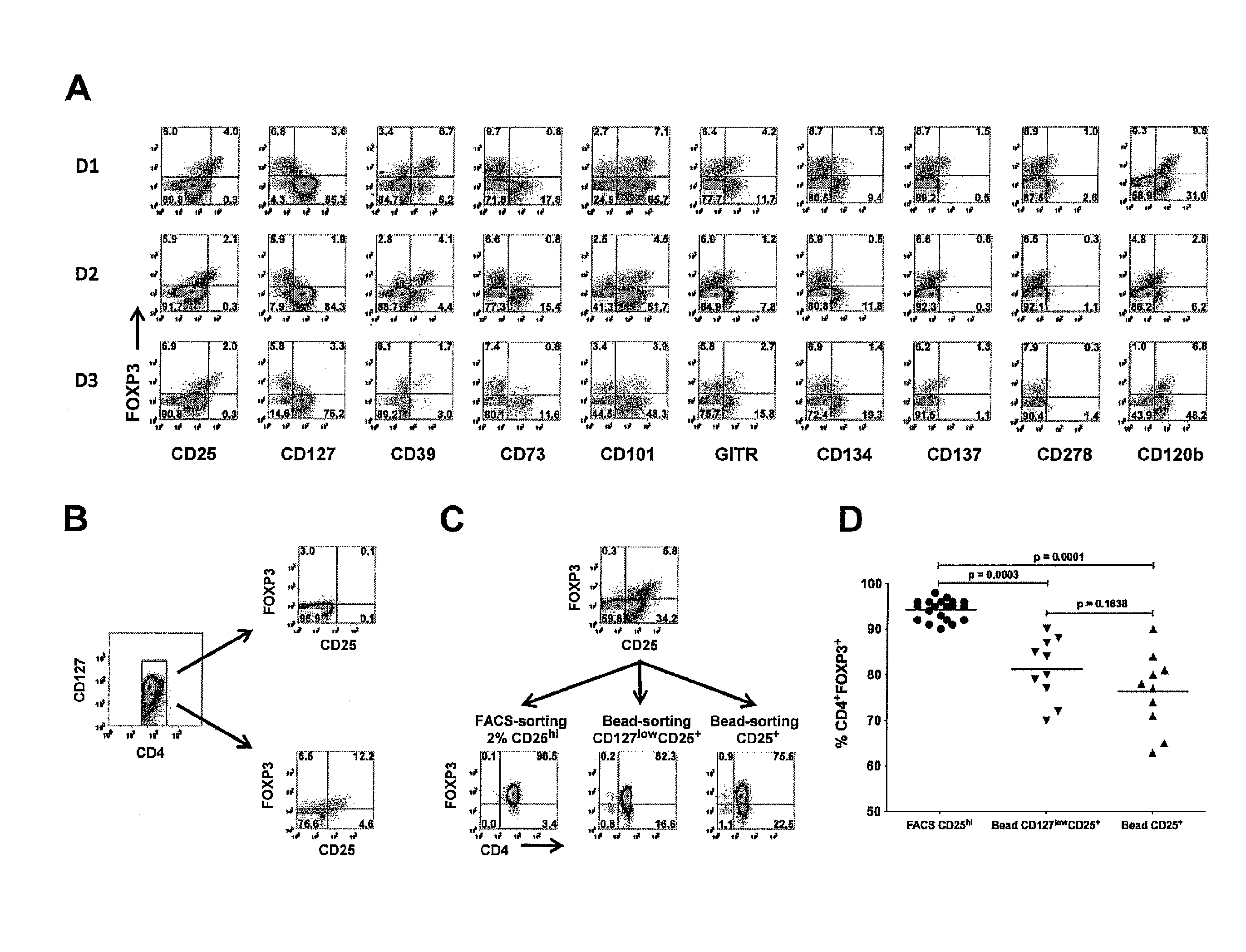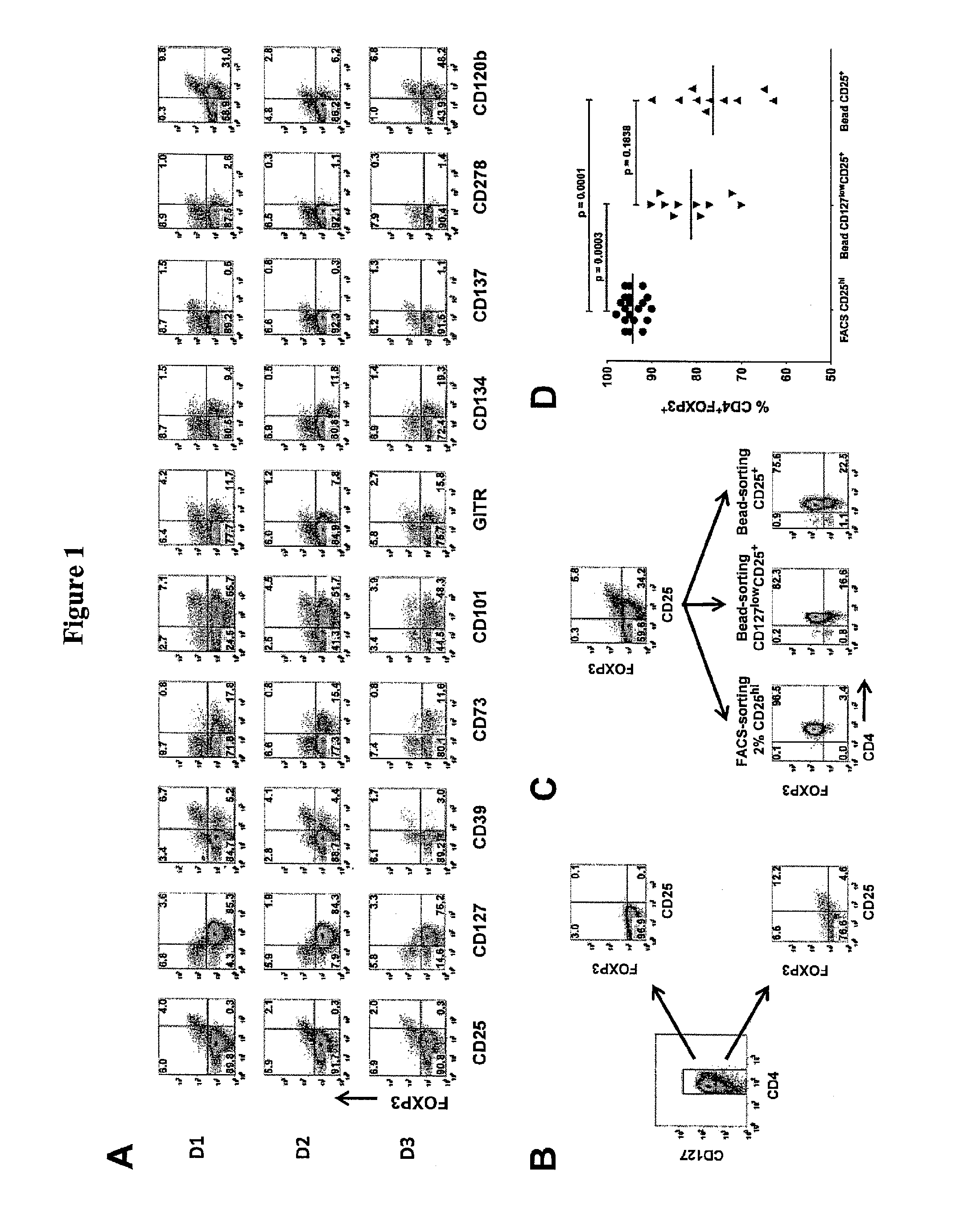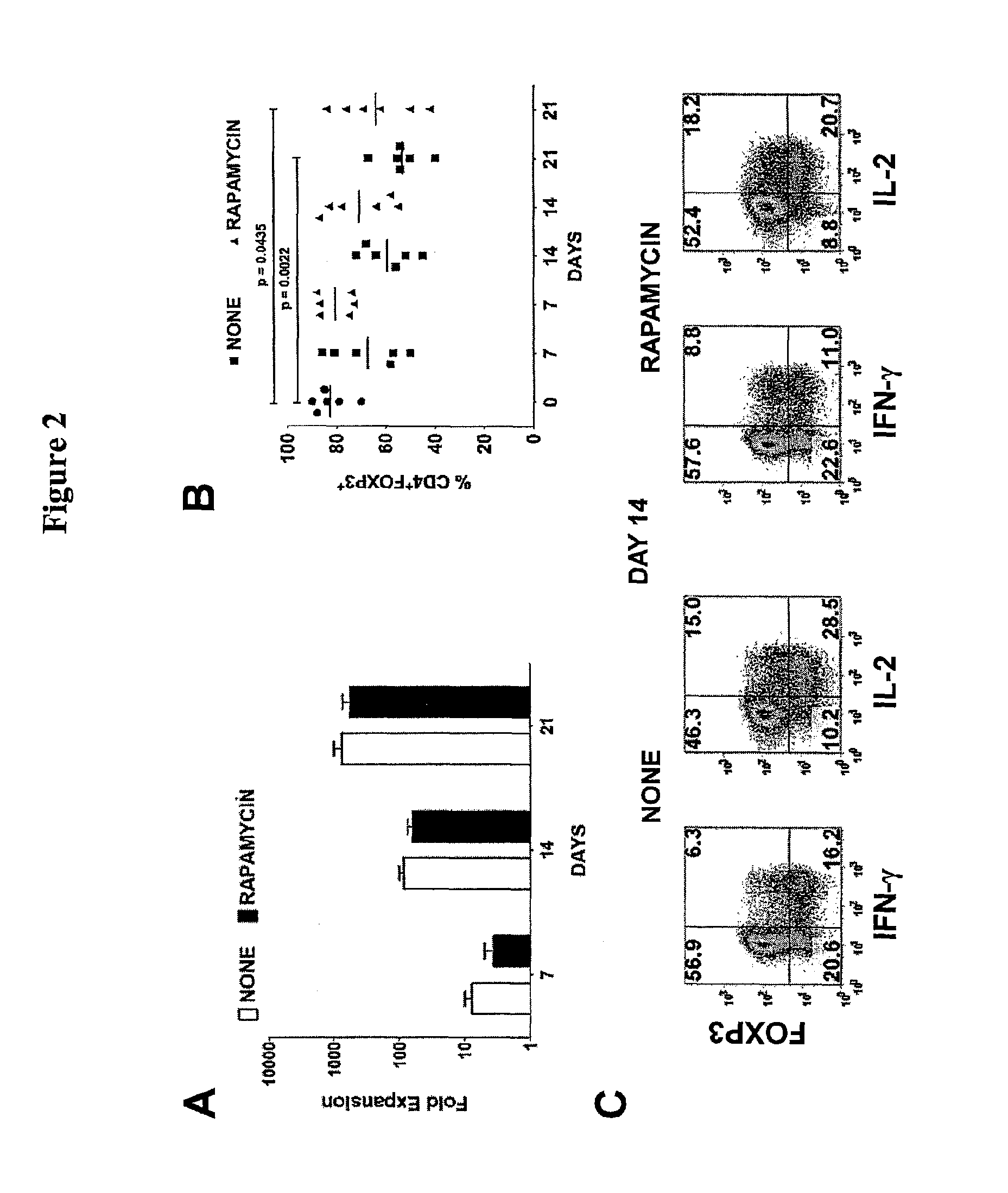Method of making an isolated population of FOXP3+ regulatory T cells
a technology of regulatory t cells and isolated populations, which is applied in the field of purifying regulatory t cells, can solve the problems of severely impairing the patient's quality of life, unclear role of tregs in the pathogenesis of these human diseases, and unsatisfactory treatment, so as to prevent or treat an immune disorder, suppress proliferative responses, and prevent the individual from receiving a transplan
- Summary
- Abstract
- Description
- Claims
- Application Information
AI Technical Summary
Benefits of technology
Problems solved by technology
Method used
Image
Examples
example 1
Cell Purification and Reagents Used
[0089]Cell leukapheresis products containing approximately 5×109 cells were obtained from healthy adult donors by the Department of Transfusion Medicine at the National Institutes of Health (NIH). The acquisition of blood products was approved according to the policies of the NIH in accordance with the Declaration of Helsinki Peripheral blood mononuclear cells (PBMCs) were obtained from 5 to 10 mL blood from patients with primary Sjögren syndrome or SLE who participated in Institutional Review Board-approved protocols at the National Institute of Dental and Craniofacial Research and the National Institute of Arthritis and Musculoskeletal and Skin Diseases, NIH (Bethesda, Md.). Written informed consent was obtained from all patients in accordance with the Declaration of Helsinki PBMCs were prepared over Ficoll-Paque Plus gradient centrifugation (GE Healthcare, Little Chalfont, United Kingdom). For FACS, CD4+ cells were enriched over the AutoMACS Pro...
example 2
In Vitro Expansion
[0091]Bead-purified CD4+CD25+ T cells (10×106) were stimulated with anti-CD3 / CD28-conjugated Dynabeads Human Treg Expander (Invitrogen) at 4:1 ratio of cell-to-bead in complete media supplemented with 100 U / mL IL-2 (PeproTech, Rocky Hill, N.J.) in the absence or presence of 25 nM rapamycin. The cells were stimulated in 12-well culture plates at 2×106 cells / well in 2 mL media.
On day 5, the cells were transferred to 75-cm2 culture flasks with additional fresh complete media and 100 U / mL IL-2. No additional rapamycin was added to the rapamycin cultures. The cultures were maintained at cell concentration of 106 / mL and split every 3 days with additional fresh IL-2 media. On day 12, the cells were washed and given fresh IL-2 media before restimulation with additional Dynabeads at 4:1 cell-to-bead ratio. After 48-hour stimulation, the cells were analyzed and purified based on the expression of LAP, CD121a, or CD121b.
[0092]For de novo induction of FOXP3, CD4+CD25−CD127+CD4...
example 3
[0093]Fresh allogeneic CD4+CD25− T cells (50,000) sorted by FACS were stimulated with 50 000 irradiated (40 Gy [4000 rad]) autologous CD3-depleted PBMCs and 0.25 μg / mL OKT3 alone or with various numbers of suppressor cells. The cells were cultured for 3 days in 96-well flat-bottom plates (Corning) and pulsed with 3H-TdR (1 μCi [0.037 MBq] / well) for the last 6 to 8 hours. In similar experiments, fresh allogeneic CD4+CD25− T cells were labeled with 2 μM CFSE and stimulated with CD3-depleted PBMCs and 0.5 μg / mL OKT3 alone or with 4:1 and 8:1 responder to suppressor cells. The cells were cultured for 3 days, and CFSE dilution was analyzed by FACS.
PUM
| Property | Measurement | Unit |
|---|---|---|
| time | aaaaa | aaaaa |
| concentrations | aaaaa | aaaaa |
| concentrations | aaaaa | aaaaa |
Abstract
Description
Claims
Application Information
 Login to View More
Login to View More - R&D
- Intellectual Property
- Life Sciences
- Materials
- Tech Scout
- Unparalleled Data Quality
- Higher Quality Content
- 60% Fewer Hallucinations
Browse by: Latest US Patents, China's latest patents, Technical Efficacy Thesaurus, Application Domain, Technology Topic, Popular Technical Reports.
© 2025 PatSnap. All rights reserved.Legal|Privacy policy|Modern Slavery Act Transparency Statement|Sitemap|About US| Contact US: help@patsnap.com



